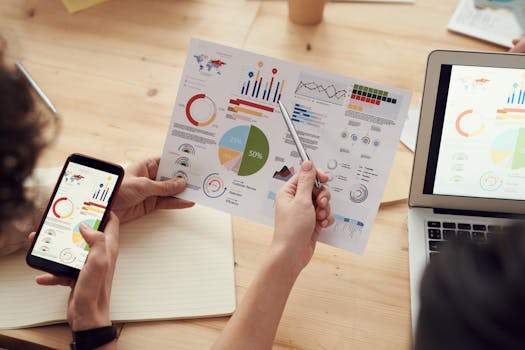The Role of Continuous Learning in Following Best Practices
In today’s rapidly changing world, continuous learning has become essential for professionals striving to maintain high standards and follow best practices. As technology advances, new methodologies, tools, and techniques emerge, making it crucial for individuals and organizations to stay informed and adaptable. By embracing a culture of continuous learning, teams can ensure they are utilizing the most efficient practices, leading to improved performance and better outcomes.
Moreover, continuous learning fosters an environment where individuals feel empowered to innovate and iterate on existing practices. This article explores the theory behind continuous learning in relation to best practices, offers practical examples, and provides strategies for integrating continuous learning into everyday work.

📊 Key Concepts
What is Continuous Learning?
Continuous learning refers to the ongoing, voluntary, and self-motivated pursuit of knowledge and skills throughout one’s life. This approach emphasizes the importance of adapting and improving one's capabilities rather than relying solely on formal education. Continuous learning can take various forms, including online courses, workshops, mentorship, and self-directed study.
Best Practices in Various Domains
Best practices are proven strategies or methods that have been shown to lead to superior performance. They are typically derived from research, experience, and benchmarking against industry standards. Following these practices can significantly enhance efficiency, quality, and outcomes in multiple sectors, from technology to healthcare.
The Connection Between Continuous Learning and Best Practices
The relationship between continuous learning and best practices is reciprocal:
- Knowledge Updates: Continuous learning provides the latest insights and trends that can shape best practices.
- Skill Enhancement: It equips professionals with new skills to implement existing best practices more effectively.
- Adaptability: In an ever-evolving landscape, the ability to learn continuously becomes vital for adapting best practices to new challenges.
🎯 How to Apply
Here are several practical examples and strategies for incorporating continuous learning to enhance adherence to best practices.
📌 Step 1: Create a Learning Culture
Definition: Foster an environment where team members are encouraged to share knowledge, ask questions, and seek further education.
Implementation:
- Encourage Open Dialogue: Host regular team meetings or forums where individuals can share what they’ve learned.
- Recognition Programs: Acknowledge and reward team members who actively pursue learning opportunities.
🗂️ Step 2: Utilize Learning Management Systems (LMS)
Definition: Leverage technology platforms that provide access to a variety of courses and training programs.
Implementation:
- Select a Platform: Choose an LMS that fits your organization’s needs (e.g., Coursera, Udemy).
- Curate Content: Include courses on industry best practices and emerging technologies.
🔄 Step 3: Incorporate Feedback Loops
Definition: Establish processes for continuous assessment and improvement based on feedback.
Implementation:
- Regular Reviews: Conduct bi-monthly or quarterly reviews to evaluate adherence to best practices.
- Surveys and Feedback Forms: Create anonymous surveys for team members to provide input on processes and practices.
📈 Step 4: Engage in Peer Learning
Definition: Facilitate knowledge exchange among colleagues to improve skills and adapt best practices.
Implementation:
- Buddy Systems: Pair team members to facilitate knowledge sharing on specific topics.
- Lunch-and-Learns: Organize informal sessions where team members present on what they’ve learned recently.
🎓 Step 5: Invest in Professional Development
Definition: Provide avenues for employees to pursue advanced training or certifications.
Implementation:
- Budget for Learning: Allocate resources for workshops, conferences, or certification programs.
- Mentorship Programs: Develop mentorship opportunities where experienced professionals can guide less experienced ones.
💡 Practical Example
Consider a software development team that aims to improve its code quality and maintainability. Here’s how they might apply these principles:
- Create a Learning Culture: They hold weekly "tech talks" to discuss recent trends in software development, allowing team members to share new ideas.
- Use an LMS: The team subscribes to an online platform where members can take courses on best practices in coding and Agile methodologies.
- Feedback Loops: Post-project retrospectives help the team evaluate what went well and what can be improved.
- Peer Learning: Implement a coding buddy system where more experienced developers help juniors review their code.
- Professional Development: The team leader allocates funds for team members to attend a major developer conference.
Manage projects with Workfeed
Workfeed is the project management platform that helps small teams move faster and make more progress than they ever thought possible.
Get Started - It's FREE* No credit card required
🛠️ Frequently Asked Questions
Here are some frequently asked questions about "The Role of Continuous Learning in Following Best Practices".
🎉 Conclusion
Continuous learning is an indispensable aspect of maintaining and enhancing best practices across various industries. By fostering a culture of learning, utilizing technology, and focusing on peer engagement and feedback, organizations and individuals can ensure they remain competitive and effective. As we continuously sharpen our skills and expand our knowledge, we not only enhance our capabilities but also contribute to a more innovative and successful workplace.
Embracing continuous learning translates into improved practices and performance, enabling individuals and organizations to thrive in today's dynamic landscape. Remember, investing in your growth today paves the way for success tomorrow! 🚀